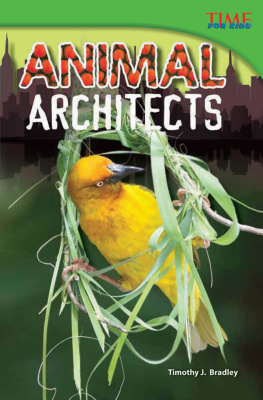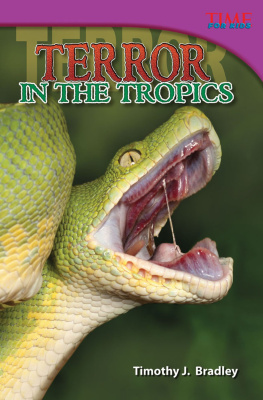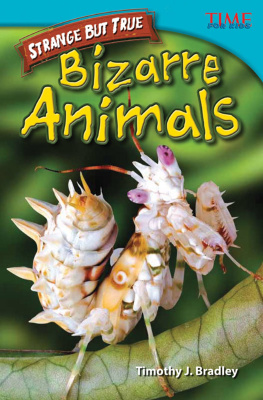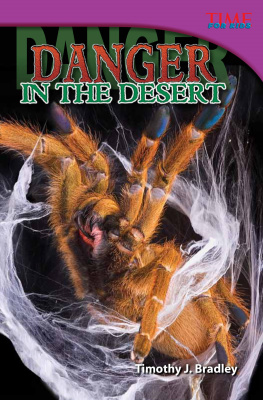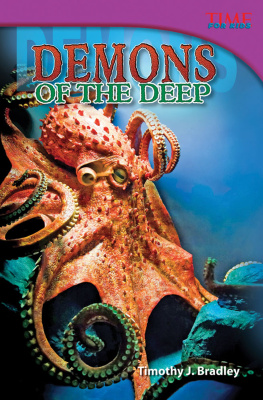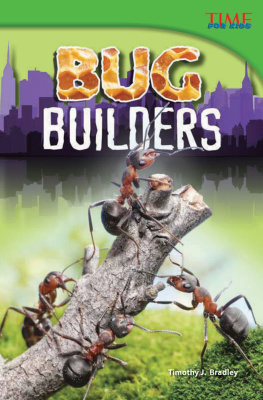
Timothy J. Bradley


Teacher Created Materials
5301 Oceanus Drive
Huntington Beach, CA 92649-1030
http://www.tcmpub.com
ISBN 978-1-4333-4822-8
2013 Teacher Created Materials, Inc.
Consultants
Timothy Rasinski, Ph.D.
Kent State University
Lori Oczkus
Literacy Consultant
Tejdeep Kochhar
High School Biology Teacher
Based on writing from
TIME For Kids. TIME For Kids and the TIME
For Kids logo are registered trademarks of
TIME Inc. Used under license.
Publishing Credits
Dona Herweck Rice , Editor-in-Chief
Lee Aucoin , Creative Director
Jamey Acosta , Senior Editor
Heidi Fiedler , Editor
Lexa Hoang , Designer
Stephanie Reid , Photo Editor
Rane Anderson , Contributing Author
Rachelle Cracchiolo , M.S.Ed., Publisher
Image Credits: p.23 (bottom) Alamy;
pp.27 (bottom), p.30 Corbis; pp.1213
(top, middle), p.34 (bottom) Getty Images;
pp.9, 2425, 48 Timothy J. Bradley; pp.7
(bottom), 11 (middle), 15 (top), 17 (bottom),
39 Photo Researchers, Inc.; p.7 (middle)
REUTERS/Newscom; All other images from
Shutterstock.
Synched Read-Along Version by:
Triangle Interactive LLC
PO Box 573
Prior Lake, MN 55372
ISBN-13: 978-1-68444-900-2 (e-book)

Natures Builders ...............
Homes at Sea ..................
Homes on Land ................
Homes Everywhere! ...........
Important Instincts ............
Glossary ......................
Index ........................
Bibliography .................. 46
More to Explore ...............
About the Author ..............
Table of
Contents

Natures
Builders
Humans build everything from
spectacular skyscrapers to tiny tents.
Around the world, people build shelters to
protect them from weather and danger. The
best buildings make people feel safe and secure.
Animals are builders, too. Some, such as
snails, use their bodies to build a shelter. Others
use the scraps they find around them.
For those who know where to look, the homes
built in nature are as amazing as human cities.
Travel underground to explore an ant city. Step
inside to investigate a busy beehive. And discover
the secret dams beavers build wherever they go.
Even in the wild, theres no place like home.
Animal Architects
An architect is someone who designs
and plans houses, skyscrapers, and
other buildings. Animals dont plan
their work in the same way humans do,
but they still need safe places to live. As
they work to stay safe, many animals
create stunning structures.

There are over 1,300,000 different
types of animals in the world!
Where do animals make their homes?
How do animals defend their homes?
What can we learn from animals?

Homes
at Sea
About percent of Earth is covered in
water. Most of that water is in the oceans.
Animal life in the ocean is diverse. There are
more than 200,000 species that live in the ocean.
Every species has a unique home.
Just like humans, animals want a home that will
keep them safe. The ocean is a big place. And,
there is plenty of room for every creature. But it is a
dangerous place. Every creature must protect itself
from predators.
Scientists believe life began in water. Perhaps
the first animal homes were built in water.

2010 Marine Census
The Marine Census is a collection of information
about the ocean. It took years and more than 2,700
scientists to create it. But now we can learn about all
the plants and animals that have been discovered in the
ocean. The Census tells us where each species lives and
how many there are. The ocean is so large that scientists
are still finding new species to add to the list.
The yeti crab was discovered in
the 2010 Marine Census.
Marine Census scientists named
the Dumbo octopus for its fins
that look like ears.

Chambered
Nautilus
The chambered nautilus is related to
the octopus and squid. Like its relatives, it
has many arms up to 90! But the nautilus
has something the others dont have. It has a
beautiful shell that protects it from predators. The
shell offers camouflage. The top of the shell is
dark. It blends in with the dark sea. It is light on the
bottom. This blends in with the light coming from
above the water. The shell is divided inside. New
rooms, or chambers, are added to the
shell as the animal grows. The nautilus can pull itself
inside the shell if it feels threatened.
Protection
from Predators
The nautiluss hard shell offers
protection from the sharp
teeth of predators. Snails and
hermit crabs also use shells for
protection. In this same way,
humans once built walls around
castles. These tall rock walls
protected the people inside the
castle from arrows and cannons.

Clever Colors
From Above
From the Side
From Below
The top of the shell is
dark and blends in with
the dark sea.
The nautiluss blended
colors hide it from
predators swimming
above and below.

